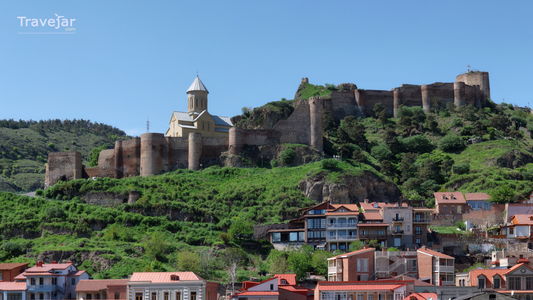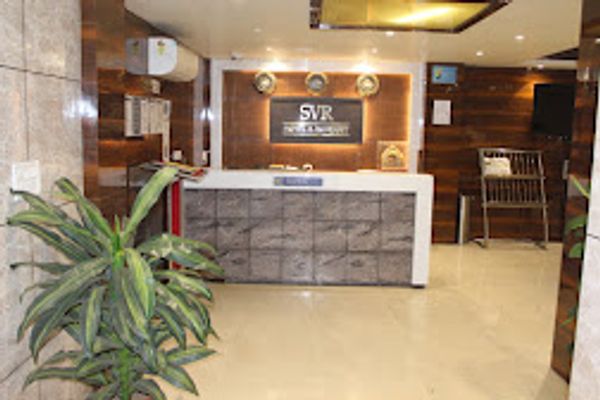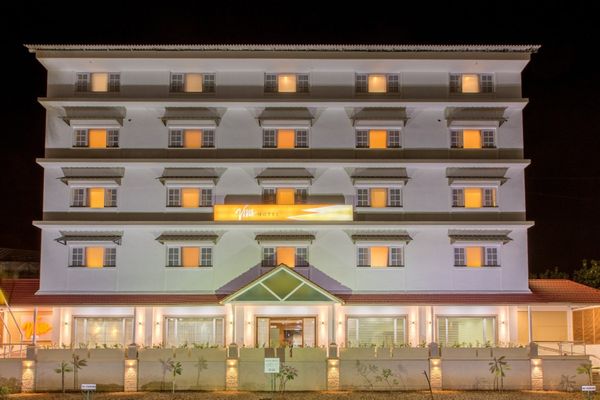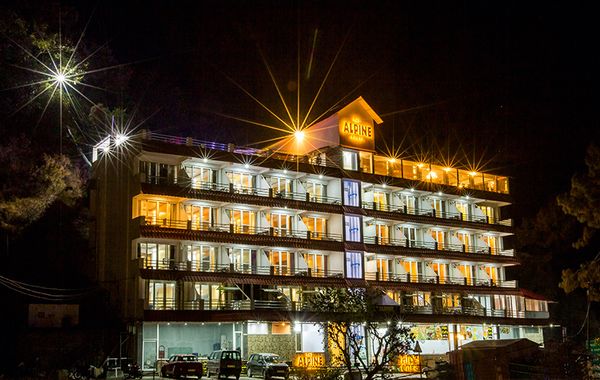Narikala Fortress: The Iconic Guardian of Tbilisi’s Skyline
 Tina Sharma
12 May, 2025
9 mins read
34
Tina Sharma
12 May, 2025
9 mins read
34

Perched on a steep hill overlooking the old town of Tbilisi and the Kura River, Narikala Fortress stands as one of the most enduring symbols of Georgia’s capital. This ancient citadel, with its panoramic views, captivating history, and strategic prominence, offers visitors a powerful glimpse into Tbilisi’s layered past. Whether you're a history buff, a culture lover, or a casual traveler exploring the Caucasus region, Narikala Fortress is a must-visit destination.
In this blog post, we’ll uncover everything you need to know about Narikala Fortress—its history, architecture, how to visit, and why it should top your list when traveling to Tbilisi, Georgia Tour Packages.
A Brief History of Narikala Fortress
The history of Narikala Fortress stretches back nearly 1,500 years. Built in the 4th century AD, during the reign of King Varaz-Bakur of the Persian Empire, the fortress was initially a Persian citadel. Its name, "Narikala," is believed to derive from the Persian word "Narin Qala"—meaning “little fortress.â€
Through centuries of conquests and shifts in power, Narikala has been expanded, damaged, rebuilt, and reinforced by various empires and rulers. The Umayyads, Mongols, and Georgian kings all contributed to the fortress’s development at different points in time. Most of the current walls and structures visible today date back to the 16th and 17th centuries, during the rule of the Persian and Ottoman empires.
A powerful earthquake in 1827 destroyed large portions of the fortress, including some towers and walls. While restoration efforts have been modest, the ruins remain a picturesque and evocative part of Tbilisi’s historical skyline.
Architectural Highlights
While much of Narikala is in ruins, the remaining fortress walls, watchtowers, and internal structures still showcase classic medieval fortification architecture. Built with locally sourced stone and brick, the thick walls are strategically aligned along the ridge of the Sololaki hill, maximizing visibility and defense.
Saint Nicholas Church
Within the fortress grounds stands the Saint Nicholas Church, reconstructed in 1996 on the site of a 13th-century church that was destroyed by fire. This Georgian Orthodox church was rebuilt in a traditional architectural style, complete with a conical dome and beautiful frescos that depict key scenes from the Bible as well as notable events from Georgian history.
While Saint Nicholas Church is not ancient compared to the fortress itself, it adds spiritual and cultural significance to the site and offers a quiet place for reflection amidst the ruins.
The Best Views in Tbilisi
One of the main reasons tourists and locals flock to Narikala Fortress is the unrivaled panoramic view of Tbilisi. From the fortress walls, you can enjoy a sweeping perspective of:
- The Kura River winding through the city
- The Old Town with its colorful balconies and red-tiled roofs
- The Bridge of Peace, a modern architectural marvel
- The Mother of Georgia (Kartlis Deda) monument, which stands nearby
- Mount Mtatsminda and the Tbilisi TV Tower
Sunset is an especially magical time to visit, as the city lights begin to glow and the golden hour casts a warm hue across the landscape. Bring your camera—you’ll want to capture these views.
How to Get to Narikala Fortress
There are several ways to reach Narikala Fortress:
1. Hiking Up from Old Town
The most popular and rewarding way to access the fortress is by walking through the Old Town of Tbilisi. Follow narrow, winding streets that lead up to the Sololaki hill. The hike is moderately steep but takes only 20–30 minutes, depending on your pace.
2. Tbilisi Cable Car
For a more scenic and less strenuous route, take the Tbilisi cable car from Rike Park. The short ride offers beautiful aerial views of the city and drops you off right next to the Mother of Georgia statue, just a short walk from the fortress.
3. Taxi or Car
If mobility is a concern, you can also reach the area by car or taxi, though the roads are narrow and parking is limited. Walking remains the best way to fully experience the charm and scale of the site.
What to Expect When Visiting
Narikala Fortress is free to enter and open year-round. Here’s what you can expect during your visit:
- No formal entrance: There are no ticket booths or gates; the site is open and self-guided.
- Unpaved paths: Wear comfortable walking shoes; the terrain can be uneven and slippery in wet weather.
- Great photo opportunities: Bring a camera or smartphone with a wide-angle lens for capturing the scenery.
- Nearby attractions: Combine your visit with stops at the Botanical Garden, Abanotubani sulfur baths, and Leghvtakhevi waterfall, all within walking distance.
The Symbolism of Narikala Fortress
Beyond its military function, Narikala symbolizes the resilience and identity of the Georgian people. It has withstood invasions, natural disasters, and centuries of political upheaval, yet it remains standing as a silent witness to Tbilisi’s transformation.
Its location at the crossroads of Europe and Asia has meant that Narikala—and Tbilisi as a whole—has always been a meeting point of cultures, religions, and traditions. Today, this blend is evident in the fortress’s surrounding neighborhood, where churches, mosques, and synagogues coexist in close proximity.
Tips for Visitors
To make the most of your trip to Narikala Fortress, keep the following tips in mind:
- Go early or late: Avoid midday heat and crowds by visiting in the morning or near sunset.
- Stay hydrated: Especially if you're walking up the hill, bring a bottle of water.
- Bring a flashlight: If you’re visiting around dusk, it helps to have a flashlight for navigating darker corners.
- Check the weather: A clear day offers the best views, so plan your visit accordingly.
- Respect the site: While it’s a popular tourist attraction, Narikala is also a historic monument—tread lightly and be respectful.
Final Thoughts
Narikala Fortress is not just a pile of ancient stones—it's a living storybook etched into the hills of Tbilisi. Whether you're watching the sun rise over the city, marveling at centuries-old walls, or simply soaking in the ambiance, the experience is one that stays with you long after your trip ends.
So if you're planning a visit to Georgia, make sure Narikala Fortress is high on your itinerary. It’s the perfect blend of history, scenery, and cultural heritage—and it’s waiting for you to explore.
Written By:
Tina Sharma



Hotels at your convenience
Now choose your stay according to your preference. From finding a place for your dream destination or a mere weekend getaway to business accommodations or brief stay, we have got you covered. Explore hotels as per your mood.





